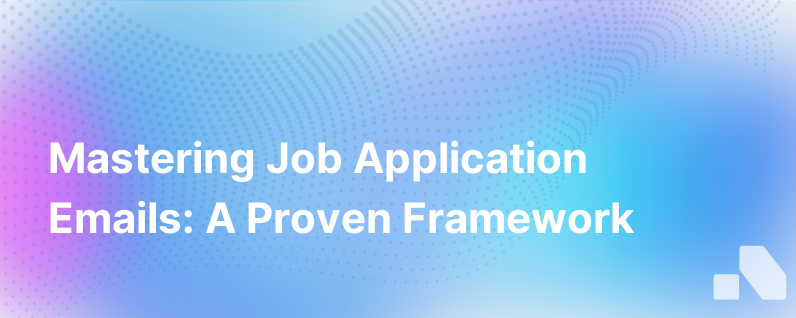
In the competitive job market, your first impression often depends on the email that accompanies your application. This email is your initial opportunity to showcase your professionalism, attention to detail, and genuine interest in the role. An effective job application email can capture the employer's interest and distinguish you from other candidates.
Whether you're applying for a new job or reaching out to potential employers, mastering the art of crafting a compelling job application email is vital. In this guide, we will provide a robust framework for job seekers to structure their application emails to make a memorable impression.
Understanding the Purpose of a Job Application Email
The goal of a job application email is not simply to inform the hiring manager of your interest; rather, it is to persuade them of your suitability for the role and your unique value proposition. This email serves as a self-introduction and a brief yet persuasive argument for why your skills, experience, and motivation align with the company's needs.
The Components of an Effective Job Application Email
To be effective, every job application email should have the following elements:
Subject Line
The subject line is the first text the hiring manager reads. Be clear and professional — include your name, the position you're applying for, and a reference number if applicable. For example: "Jane Doe Application for Marketing Manager (Ref#0000)"
Greeting
Address the hiring manager by name if possible. Research through LinkedIn or the company website to find the appropriate contact. If you cannot find a name, use a neutral greeting such as "Dear Hiring Manager."
Opening Paragraph
Start with an attention-grabbing first sentence. Express your enthusiasm for the company and the position. Mention where you found the job listing and your interest in the opportunity, for example: "I came across the posting for [Job Title] on [Where You Found the Job], and I am thrilled at the prospect of bringing my expertise in [Skill or Industry] to [Company Name]."
Middle Paragraph(s)
This is where you pitch yourself. Focus on two to three of your most relevant experiences or skills that match the job requirements. Use quantifiable achievements when possible, and relate your past work to what the employer is searching for. For example: "In my current role at [Your Current Company], I [describe an accomplishment or project, and use data to back it up if possible], directly supporting our team's goals of [Company's goals]."
Closing Paragraph
Reiterate your interest in the position and the value you'd bring. Politely invite them to review your attached resume and express your availability for an interview. Be proactive; suggest following up after a specified time. For example: "I am eager to offer more insight into my qualifications and look forward to the opportunity to discuss how my skills and experiences align with the goals of [Company Name]. I’ve attached my resume for your consideration and plan to follow up next week to ensure you've received all application materials."
Sign-off and Signature
End with a professional closing, such as "Sincerely" or "Best regards," followed by your full name. Below your name, include your professional title, phone number, and any other relevant contact information like your LinkedIn profile or portfolio website.
Attachments and Formatting
Attach your resume, cover letter, and any other requested documents in commonly accessible formats such as PDF. Keep your email format clean and professional — avoid using unusual fonts, colors, or graphics.
Best Practices for Job Application Emails
In addition to the components above, the following best practices can further enhance your email.
Personalization
Customize every application email. Generic applications are easy to spot and suggest a lack of genuine interest. Use the company's language and mention specifics about the role or organization that resonate with you.
Brevity
Keep your email direct and concise. While providing essential information is crucial, the ability to convey your message succinctly is a valued skill.
Proofread
Always proofread your email, more than once if necessary. Errors can signal a lack of attention to detail, so double-check for correct spelling, grammar, and formatting. Tools like Grammarly can help, but a final human review is indispensable.
Timing
Consider the timing of your email. Avoid sending applications over the weekend or late at night. Aim for early to mid-week mornings when inboxes are less cluttered.
Follow-Up
Remember to follow up if you've indicated you would in your email. It demonstrates persistence and reinforces your interest in the position.
Conclusion
A compelling job application email is an integral part of your job search strategy. Use the framework outlined above to craft an email that effectively communicates your enthusiasm for the role, the relevance of your skills and experience, and your fit within the company's culture. With every email crafted using this detailed guidance, you increase your chances of standing out among applicants and moving forward in the company's hiring process.
Remember, job application emails are a blend of art and strategy. By mastering this initial touchpoint, you pave the way for the rest of your application to be evaluated with the thoughtful consideration it deserves.